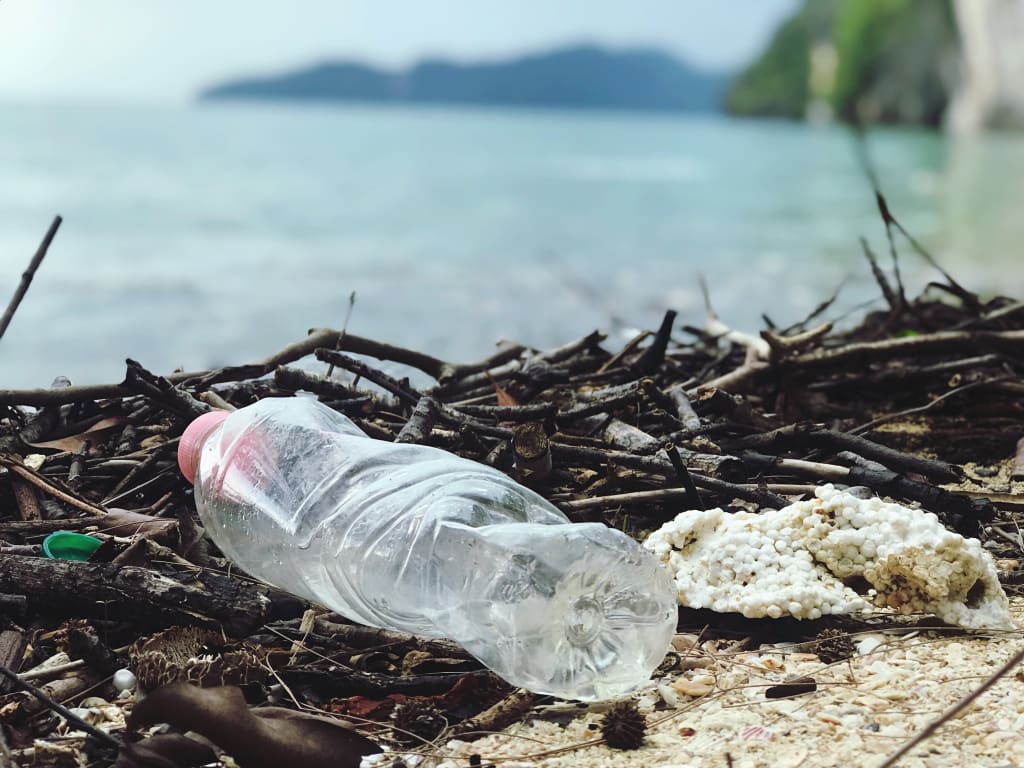When humanity perished, plastic still slumbered on the ocean floor!
The Stone Age, the Bronze Age, and the Iron Age, the practice of naming an era with materials, just rightly illustrates that materials are the accelerators and witnesses of the course of human civilization.

After entering the 20th century, with the emergence of a class of materials with strong plasticity, a wide variety and superior performance, human life has undergone profound changes. This material is plastic. Our lives are inseparable from plastic products. The alarm clock that wakes you up in the morning, the earphones inserted into your ears during lunch break, the beautiful new clothes you buy... Plastic products are everywhere, and some people even say that the era we live in is "the era of plastic." ". However, while bringing us convenience, plastic also brings a serious pollution situation.
A study published in Science Advances found that plastic waste has made its way into sedimentary layers. The authors of the paper argue that the plastic layer could be used as a marker for the beginning of the Anthropocene.
In 2000, to emphasize the central role of humans in geology and ecology, Nobel Laureate in Chemistry Paul Crutzen, a Dutch atmospheric chemist, suggested using the concept of the Anthropocene to represent the current geological age. To define a new geological age, the relevant markers must have had a global impact and will be incorporated into sediments and present in future geological records.
In 2016, at the 35th International Geological Congress, the Anthropocene Working Group made a preliminary summary of the current evidence and concluded that the Anthropocene is stratigraphically real, and these markers include plastics.
Scholars at the Scripps Institution of Oceanography studied the contamination of sediments off the coast of southern California from 1834 to 2009. They analyzed seafloor sediment cores at a depth of about 580 meters off the coast of Santa Barbara. The seas where the samples were located have relatively still currents and an almost complete anoxic environment, which means that no seafloor organisms are burrowing in the sediments and disrupting the fragile sediment structure. The researchers looked at sediment samples using high-powered microscopes and then used lasers to detect the chemical composition of the plastic. Under a high-powered microscope, the sediment cores showed a clear year-to-year structure.
The researchers found that microplastics were found in sedimentary layers before 1945, when plastic products were mass-produced and widely used. In pre-1945 deposits, the microplastic deposition rate was 780 microplastics/m2/year. This number has grown exponentially after 1945, doubling every 15 years, reaching 4,000 in 2010. The amount of plastic in sediments just reflects the increase in global plastic production and population along the coast of California over the past 70 years.
"This study shows that our plastic production is perfectly replicated in our sedimentary record. What we love about plastic is really left in the fossil record," said Jennifer Brandon of the Scripps Research Institute. (Jennifer Brandon) said.
In sediment cores, most of the plastics found by the researchers are fibers in synthetic fiber fabrics, accounting for up to 77%; according to sediment observations, the types of plastics after World War II have become more diverse, in addition to fibers, there are Material fragments of plastic bags, plastic granules, etc. This shows that our domestic wastewater is not well treated and flows into the ocean.
An estimated 4.8 million to 12.7 million tons of plastic waste enter the ocean each year. Under the impact of waves, erosion, light, and weathering, plastics are gradually broken down into small plastic fragments. These plastics with a particle size of less than 5 mm are called microplastics. In addition to microplastics formed by natural decomposition, washing synthetic textiles, tire wear and industrial plastic particle loss are also major sources of microplastics in water bodies.
The loss of industrial plastic particles is a major way of releasing microplastic pollutants into the water environment. Losses may occur in the stages of production, packaging, transportation, conversion, sub-packaging, and reuse of plastics, and enter the water environment with the drainage system. In daily life, the microplastics that people inadvertently discharge into the water environment should not be underestimated. A 2016 study showed that 700,000 microplastic fibers can be released from a single wash of clothes. Wastewater from washing synthetic textiles has apparently not been properly treated, and they are being washed into the sea.
This is a serious problem and a situation that needs to be improved urgently. How we treat wastewater and what we use to make clothes are questions worth thinking about and changing.
About the Creator
Norma Noldo
I mainly write introductions about new technologies, long and short stories, and occasionally some personal experiences. Follow me if you like!






Comments
There are no comments for this story
Be the first to respond and start the conversation.